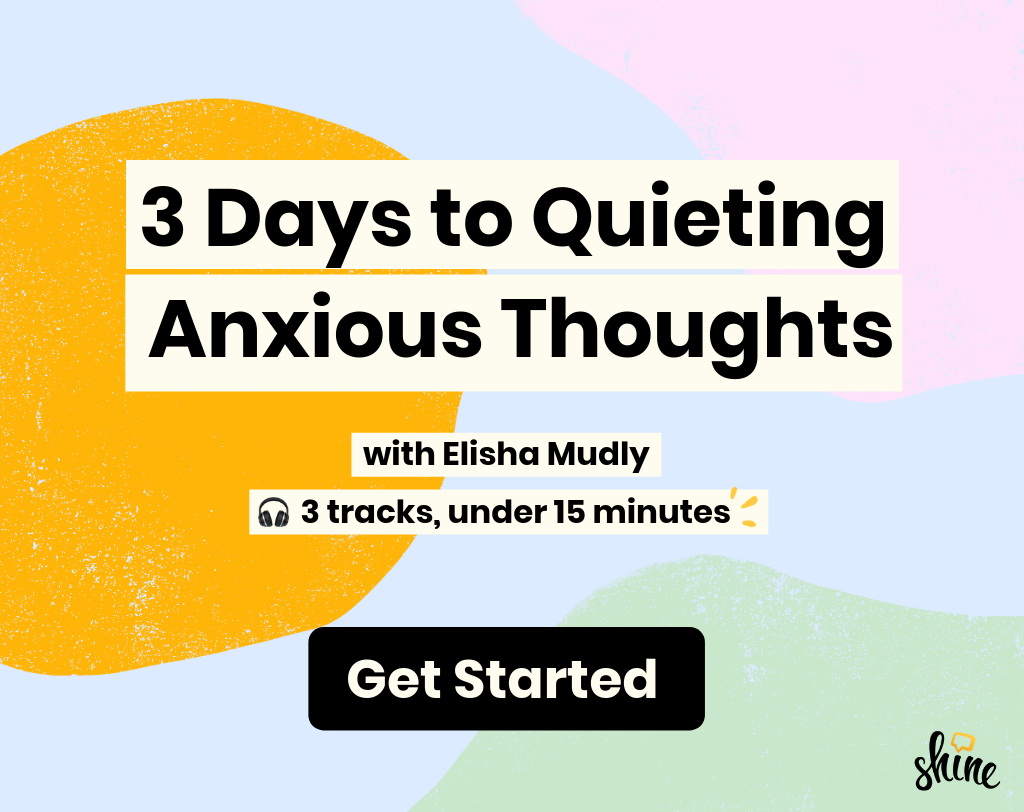Your Guide to Getting Comfy With Change
March 20, 2019
When I was five, my family moved from one side of town to the other. It was a tiny change—new school, same friends—but I was terrified. I couldn’t shake the feeling that something was horribly wrong.
Two-plus decades later, I still haven’t shaken that feeling.
Change—good, bad, or entirely neutral—stirs a sort of deep fear in me, the kind commonly reserved for bear attacks and meeting invites from HR. I’ve come to see it as a wariness of the unknown, combined with my predilection to expect the worst from any given situation.
While the old feeling hasn’t gone away, what has changed is my ability to prepare for change and the upset it brings by making lists. Once I start to feel that hollowing in my stomach and clenching in my shoulders, I’ll grab a pen and paper and get going.
First, I’ll write down all the good that could come out of the upcoming transition—I call it a Good Change List.
When I quit my job last year and started freelancing, for example, my list was wide-ranging:
●︎ I could spend more time with my family.
●︎ I could make new friends.
●︎ I could fall in love with local coffee shops.
●︎ I could make more money than expected.
●︎ I could realize I was able to get by on less money than expected.
The possibilities flew from my fingers onto the paper—they’d been in my brain all along, overshadowed by fear and doubt. But as I looked at them, in ink before me, they suddenly felt more real. Or at least as real as all my worries.
I like to create a second list and write down all the good things that have come from change in the past.
Change—good, bad, or entirely neutral—stirs a sort of deep fear in me the kind commonly reserved for bear attacks and meeting invites from HR.
When I made my second list last year, I only stopped once my hand cramped. I wrote about moving neighborhoods the year before, and how it led to the best pizza discovery of my life. How switching jobs two years before had helped me hone my skills enough that I felt comfortable going freelance. All of this good had come from changes that I’d dreaded—so couldn’t some good come from this one?
You are not your anxiety—but you're not alone in feeling it. Push through change with the 3 Days to Quieting Anxious Thoughts challenge, now available in the Shine app. Here's a sneak peek before you get started:
My technique isn’t foolproof. The second I put my pen down, I feel the negatives start to creep back in. Each possible good comes with a ‘yes, but...,’ a ‘sure, but what about...’.” But my lists help me look on the bright side and knock myself off the gloom-and-doom roller coaster, if only temporarily. And there's a reason why it works.
“Making lists...gets you out of your head and into the moment,” Jessica Clemons, M.D., an NYC-based psychiatry resident and founder of Ask Dr. Jess, tells Shine. “When you can see your list in front of you, it’s no longer stuck on play in your mind, making you feel foggy and stressed.”
Making lists may not do for you what it does for me, but there are ways to stand strong in the face of doubt. Here, a few more tricks to try.
Set Yourself Up for Success
It’s easy to stay on the self-care train when everything’s going according to plan. But when things take a turn? All my good intentions go out the window. That Monday night yoga class disappears from my calendar. I start ditching the things that keep me clear-headed and grounded, just when I need them the most. This, obviously, is not great.
“It’s important to have healthy habits in place,” Clemons says. “These habits (help) maintain your baseline, which is critical when attempting to recover from stress.”
She suggests adopting a regular exercise routine, getting enough sleep, and eating a health, balanced diet—especially when you know transition is coming. When your body and mind are in the right place, you’ll be better able to manage any change-related stress.
Breathe It Out
When things suddenly shift, our natural instincts take over: Do we fight the change, or run from it? Attack or shut down? Those reactions may have helped in the hunter-gather past, but they can be paralyzing in the present.
'If you’re able to break the (stress) cycle by slowing your breathing, the biological processes that release stress hormones and prime our bodies to engage in fight or flight are halted.'- Jessica Clemons, M.D.
The next time you freeze up, focus on your breath. (Not sure how to do that? Try one of the exercises here.)
“If you’re able to break the (stress) cycle by slowing your breathing, the biological processes that release stress hormones and prime our bodies to engage in fight or flight are halted,” Clemons says. “It can break the physiologic process of stress by slowing the heart rate and reducing muscle tension.”
It’s not a solution, per se, but rather an opportunity to think through your next step without that rush of nerves.
Tackle the Change Before It Tackles You
My personal tendency is to pump the breaks when I see a curve coming—the longer I can stave off change, the better. But Clemons suggests taking a different approach.
“It’s hard for us to conceptualize change as a process, because we imagine it to be a single event,” she says.
When I left my job, for example, what I thought of as a quick shift turned out to be nearly a dozen small actions—telling my boss, meeting with HR, planning out my finances, reaching out to future employers, even changing my idea of what it means to be productive. “Change requires moving through several processes,” Clemons says, and the sooner you start, the better.
'Change requires moving through several processes.'- Jessica Clemons, M.D.
Think of it like a to-do list: All you have to do to start is tackle the first teeny, tiny item—if you’re moving cities, that might mean registering your new address with the post office, or booking a UHaul.
Once you’ve done that, move on to the second task. Next thing you know, the change will be happening, and you’ll be moving right along with it.
Taking action first, rather than letting things come crashing down before you sprint out of the way, puts some of the power back in your hands—and removes some of the fear.
Read next: The 1 Question We Forget to Ask in the Face of Change
Today's recommended meditation:

Shine is supported by members like you. When you buy through links on our site, we may earn an affiliate commission. See our affiliate disclosure for more info.


